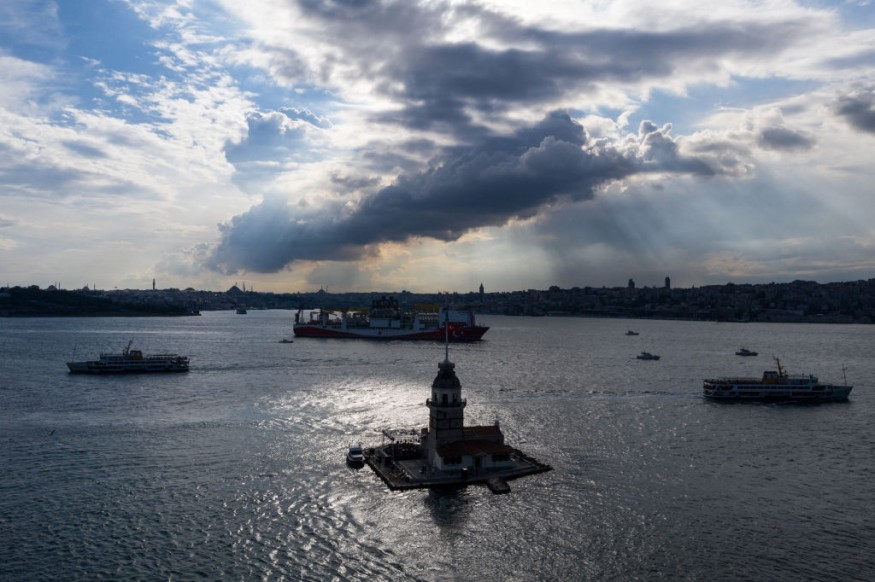In a deep part of the Black Sea, situated between Europe and Asia, the waters still respond to a climate change pattern prompted by the last Ice Age - a period which officially ended about 12,000 years ago.
Researchers report the latest analysis of gas hydrate deposits, referring to methane trapped in water molecules in the Black Sea that physically looks like ice, is actually a delayed response. This section of the Black Sea apparently is still in the Ice Age is in the northwestern part of the sea bottom, covering the section known as the Danube fan.
Researchers report their findings in an article titled "In-situ borehole temperature measurements confirm dynamics of the gas hydrate stability zone at the upper Danube deep sea fan, Black Sea," set to appear in the June issue of the journal Earth and Planetary Science Letters.

Drilling in the Depths of the Black Sea
In the abstract for their paper, researchers share about conducting various tests - coring, geophysical logging, and in-site temperature measurements - with the MARUM-MeBo200 seafloor rig - a robotic drill deployed on the sea bed and is remotely controlled from a vessel. The robot drill is used to take deep-sea samples through rotary core drilling.
The tests conducted on the Danube fan section of the Black Sea revealed that the levels of free methane under the seafloor do not match with those from other locations, suggesting that these samples have not yet adapted to the warmer conditions that the rest of the world's oceans have adapted for thousands of years now.
"This shows that the gas hydrate system in the Danube deep sea fan is still responding to climate changes initiated at the end of the last glacial maximum," researchers noted in their paper.
A critical part of these findings is the researchers' attempts to find the "gas hydrate stability zone (GHSZ)," which is the lowest point where gas hydrates form naturally due to the conditions in temperature and pressure, among others. The GHSZ is often found in the middle of free methane gas regions, where the materials are not trapped in hydrates.
In locating the base of the GHSZ, researchers often rely on a bottom-simulating reflector (BSR), which generates a seismic reflection of the sediment at the seafloor. However, a previous study has revealed that there is a discrepancy in the depth determined between the BSR and the actual base of the GHSZ.
Finding the Lagging Part of the Sea
Through the MARUM-MeBo200 drilling through the seafloor to measure the temperature, researchers found out that the GHSZ has already adapted to the warmer conditions, indicated by its rise to a higher level. However, the free methane gas and the BSR associated with it remain lagging.
"From our point of view, the gas-hydrate stability boundary has already approached the warmer conditions in the subsurface, but the free methane gas, which is always found at this lower edge, has not yet managed to rise with it," said Michael Riedel, one of the authors of the study and a geophysicist from the GEOMAR Helmholtz Center for Ocean Research.
This Ice Age similar behavior could help explain the BSR discrepancy, with other factors like sediment permeability also a reasonable explanation.
Researchers noted that 20,000 years ago, during the Ice Age, the water level was 328 feet (100 meters) lower in the Black Sea than it is at the present. Water levels affect temperature and pressure conditions on the seafloor, and for the free methane gas deposits underneath, the conditions have not changed yet.
RELATED ARTICLE : An Ice Age Might Have Occurred During the Boring Billion
Check out more news and information on the Ice Age in Science Times.
© 2025 ScienceTimes.com All rights reserved. Do not reproduce without permission. The window to the world of Science Times.












